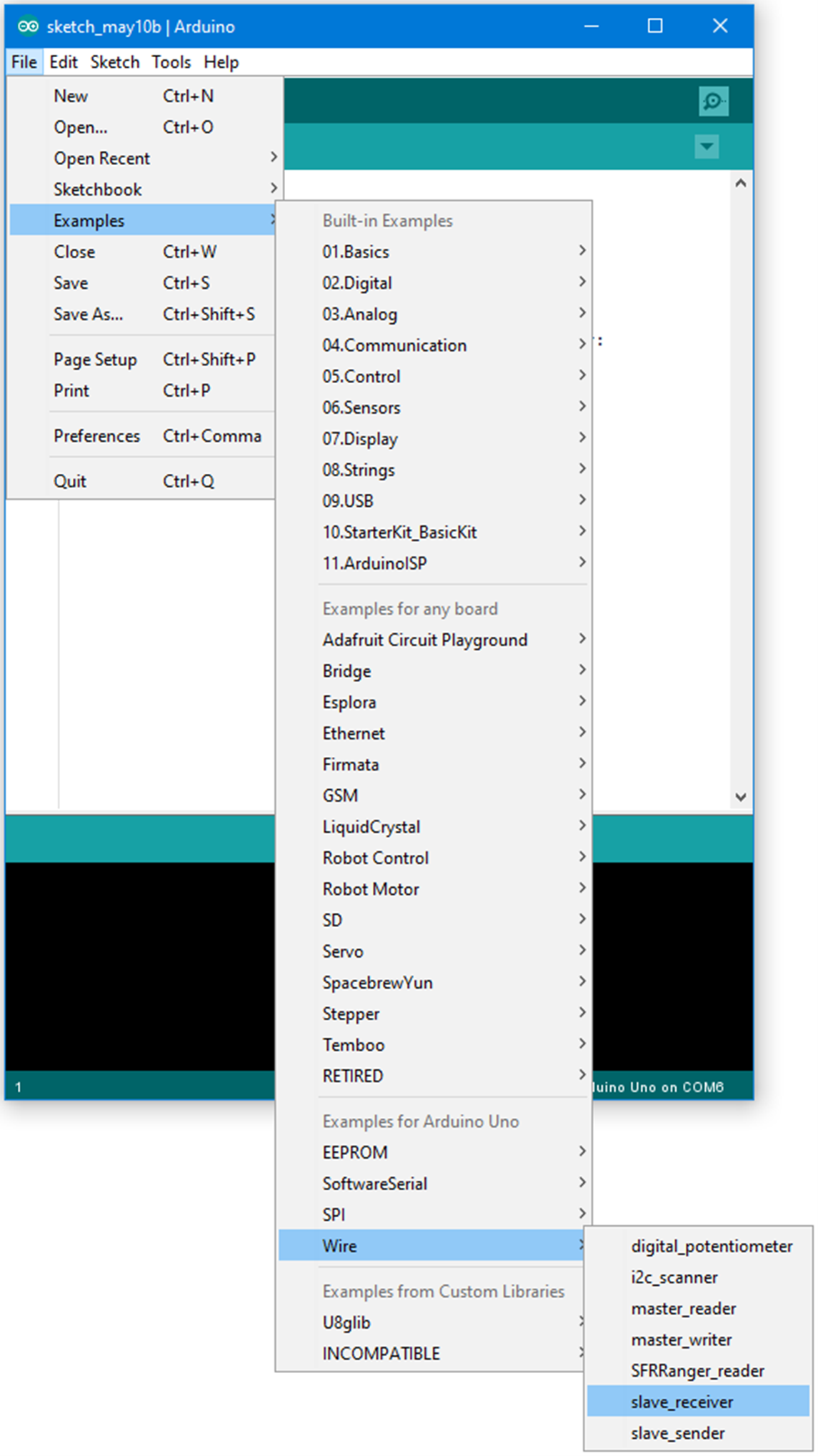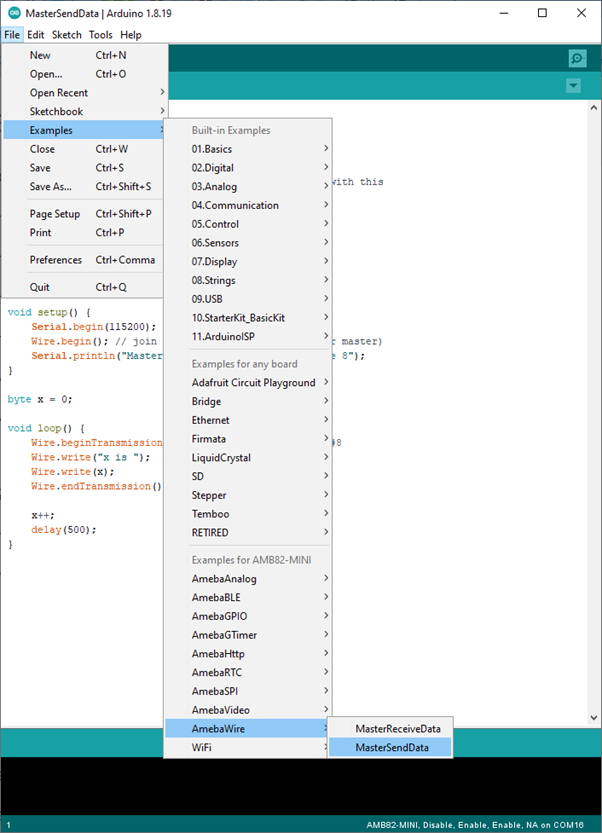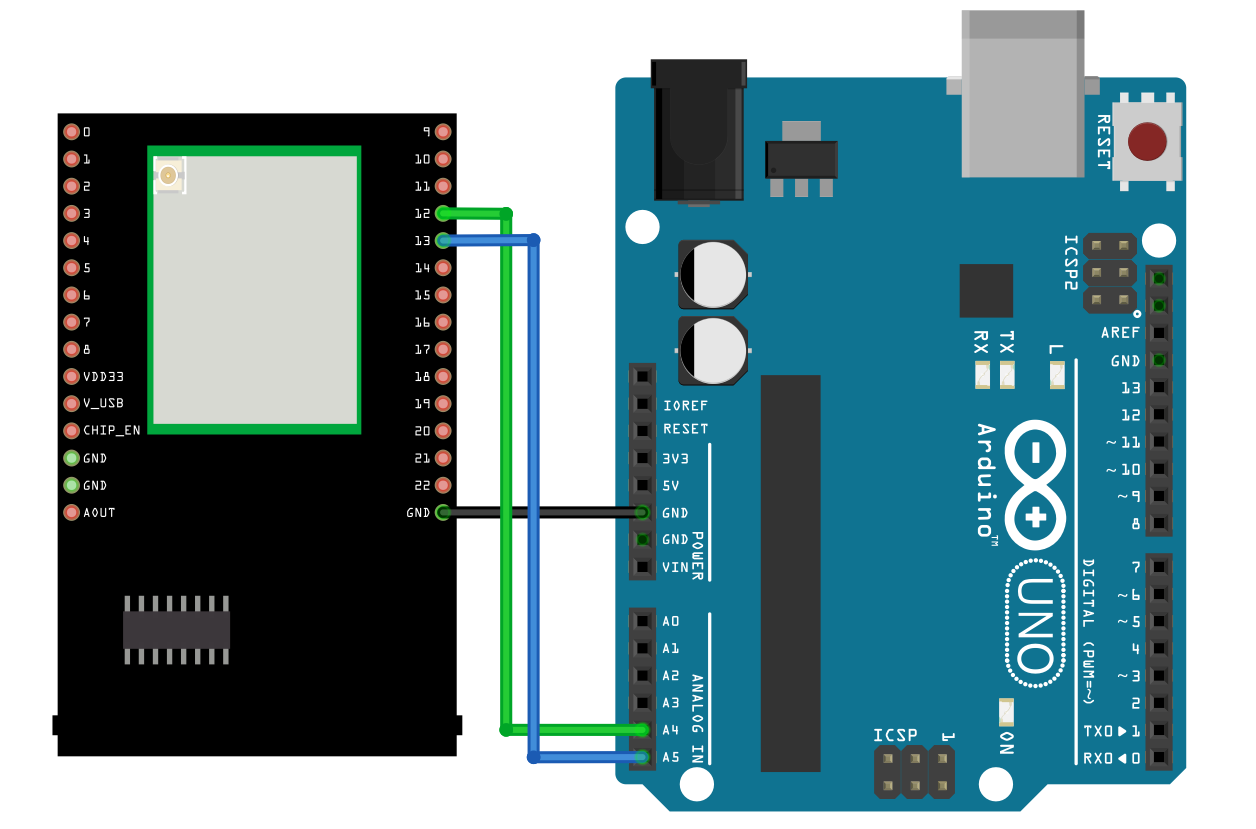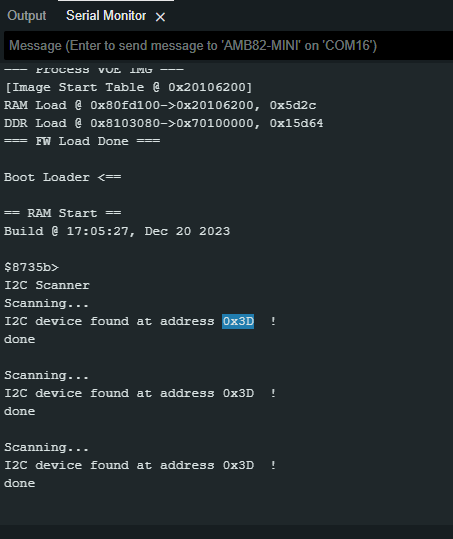Display Data on LCD Screen
Materials
AMB82-mini x 1
I2C 2x16 LCD
Example
Introduction
Normally there are many pins on an LCD display, as shown below.
An LCD display can be equipped with an additional processing chip to process the data. The processing chip can connect to a microcontroller using the I2C interface.
Procedure
AMB82 Mini wiring diagram:
After 8 seconds, you can input to the Serial Monitor the string you would like to display on the LCD.
For example, we enter “123456789” and press “Send”:
Code Reference
The required settings for each model of LCD might be different. The constructor we use in this example is:
LiquidCrystal_I2C(uint8_t lcd_Addr, uint8_t En, uint8_t Rw, uint8_t Rs, uint8_t d4, uint8_t d5, uint8_t d6, uint8_t d7, uint8_t backlighPin, t_backlighPol pol);
And the setting parameters are as follows:
LiquidCrystal_I2C lcd(0x27, 2, 1, 0, 4, 5, 6, 7, 3, POSITIVE); // Set the LCD I2C address
The first parameter 0x27 is the address of I2C. Each of the following 8 parameters represents the meaning of each bit in a byte, i.e., En is bit 2, Rw is bit 1, Rs is bit 0, d4 is bit 4, and so forth.
backlight() to light the screen.setCursor(0, 0) to set the position of the cursor.lcd.print() to output string on the screen.



